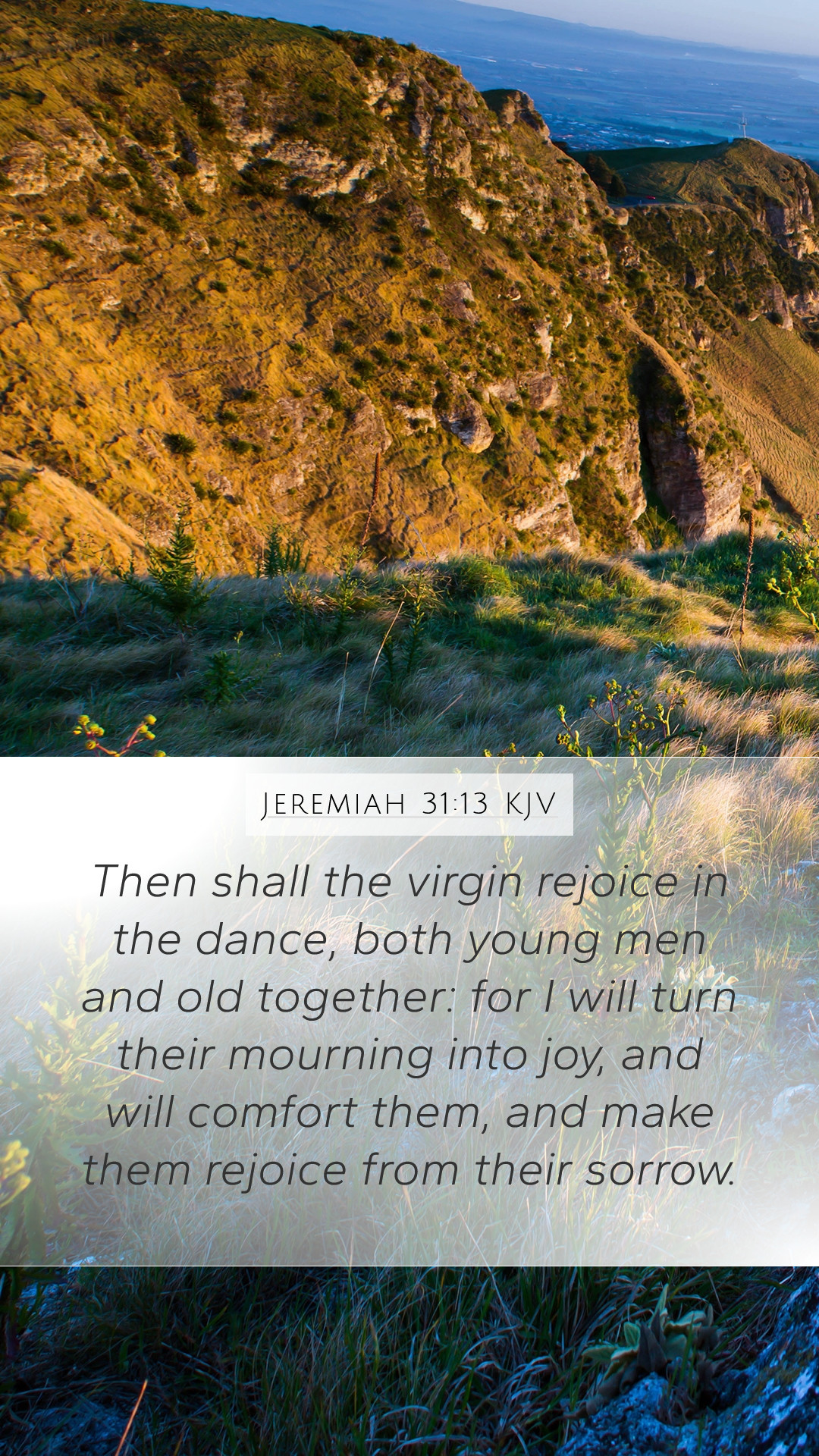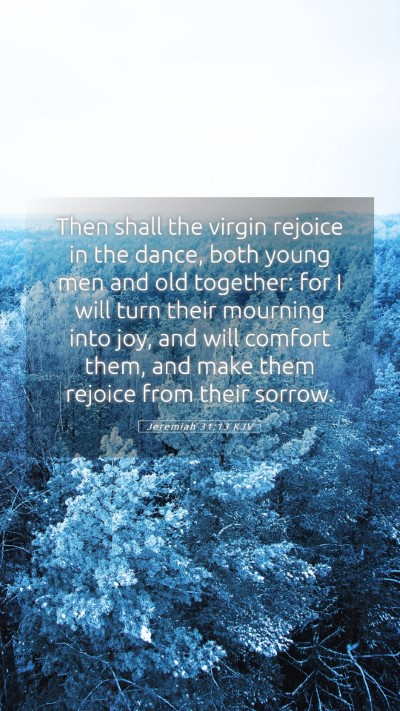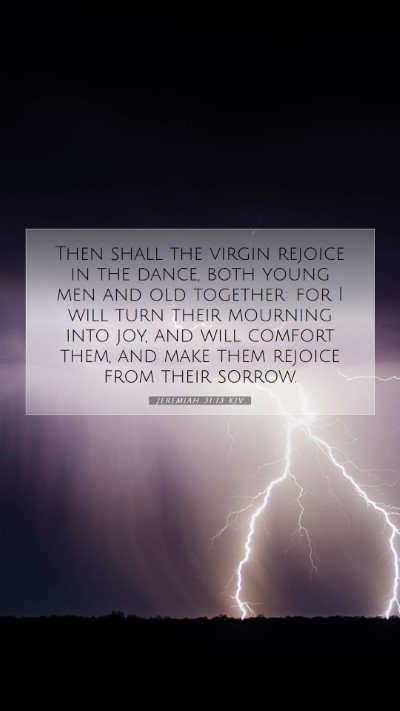Understanding Jeremiah 31:13
This passage from the book of Jeremiah is rich with meaning and offers profound insights into God's promises of restoration and joy. In this biblical exegesis, we will explore the interpretations and meanings of this verse through the lenses of various public domain commentaries, including those by Matthew Henry, Albert Barnes, and Adam Clarke.
Context of Jeremiah 31:13
Jeremiah was a prophet during a tumultuous time in Israel's history, marked by impending judgment and exile. Chapter 31 serves as a pivotal moment, highlighting hope and restoration following devastation. This verse specifically captures the transformation from mourning to celebration.
- Historical Context: The Israelites were facing captivity and the loss of their homeland. Jeremiah speaks to their future hope.
- Literary Context: Jeremiah 31 is often referred to as a chapter of comfort. It addresses the transition from sorrow to joy in the hearts of God's people.
- Theological Context: This verse signifies God's unwavering commitment to His covenant with Israel, promising a return from exile and restoration of joy.
Verse Breakdown and Meanings
Jeremiah 31:13 states: "Then shall the virgin rejoice in the dance, both young men and old together: for I will turn their mourning into joy, and will comfort them, and make them rejoice from their sorrow." This verse embodies several layers of meaning:
- Virgin Rejoicing: The mention of 'the virgin' symbolizes purity and new beginnings. It indicates a fresh outpouring of joy once the sorrowful circumstances have changed.
- Joyful Dance: Dancing is a physical expression of joy, representing the culmination of hope fulfilled and the restoration of life.
- Generational Inclusion: The reference to both young and old highlights that God's promises are inclusive and relevant to all generations.
- Transformational Comfort: God promises to reverse their grief with joy. This was a profound promise of restoration that resonates deeply with the human experience of despair and hope.
Commentary Insights
By examining the insights of renowned commentators, we gain a deeper understanding of this verse:
- Matthew Henry: He emphasizes God's ability to turn sorrow into joy, highlighting the contrast between mourning and celebration, which is fundamental in the journey of faith.
- Albert Barnes: He suggests that this promise in Jeremiah points to a future hope not only for Israel but also extends to the joyful conditions of the Messianic age, focusing on restoration.
- Adam Clarke: Clarke notes the symbolism of dancing as a communal activity, reflecting the collective joy that God's restoration will bring to all His people.
Cross References
Jeremiah 31:13 has several biblical cross-references that enhance its meaning:
- Psalms 30:11-12: "You turned my mourning into dancing; you removed my sackcloth and clothed me with joy." - This verse directly mirrors the theme of transformation from sorrow to joy.
- Isaiah 61:3: "To grant to those who mourn in Zion... that they may be called oaks of righteousness, the planting of the Lord, that he may be glorified." - This indicates God's promise to comfort and restore His people.
- Lamentations 5:21: "Restore us to yourself, O Lord, that we may be restored; renew our days as of old!" - A cry for restoration that resonates with the promise in Jeremiah.
Application and Relevance
This verse offers timeless relevance for contemporary readers. Here are a few applications:
- Hope in Despair: It encourages believers facing difficult circumstances that God can transform their situation, instilling hope.
- Community and Joy: It highlights the importance of shared joy within the community of believers, inviting participation in communal worship and celebration.
- Understanding Grief: This verse acknowledges the reality of mourning while promising that joy is possible through God’s intervention.
Conclusion
Jeremiah 31:13 is a profound declaration of God’s desire to restore His people, transforming their sorrow into joy. By studying its meanings and interpretations, we strengthen our understanding of Scripture and enrich our spiritual lives. Whether in a Bible study group or through personal online Bible study, this verse invites us to explore God’s promises and find joy in our faith journey.
For those seeking deeper Bible verse meanings and Bible verse commentary, this verse encapsulates the essence of God’s redemptive nature and His commitment to bring joy to those who seek Him.


